
Final Miramichi Salmon Trap Counts and Timing of the 2022 Run
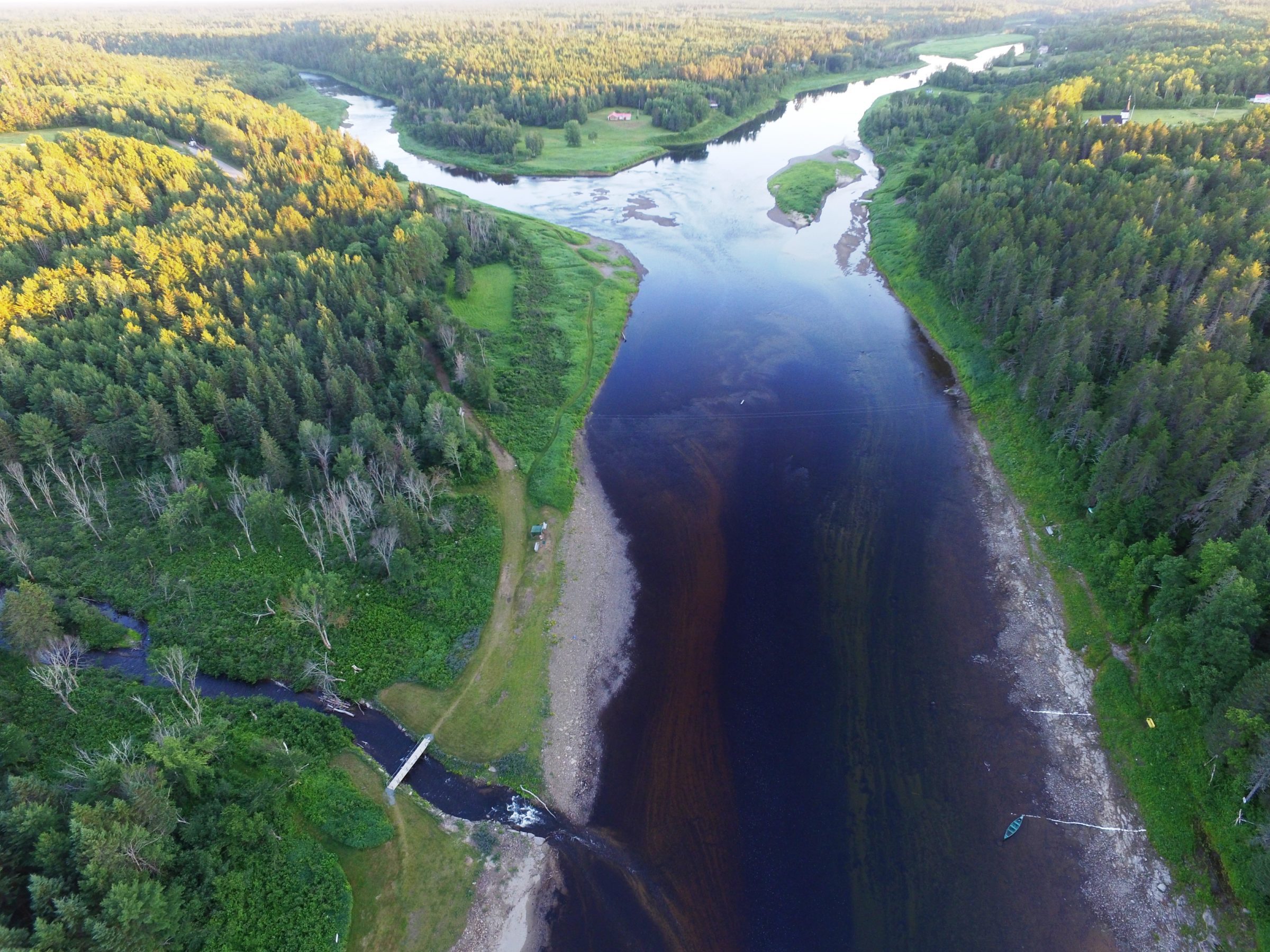
In the early 1900s outfitter Harry Allen saw the potential of this stretch of the SW Miramichi that contains the junction pool with the Cains flowing in on the upper left, and Black Brook entering from the left in the foreground.
The final 10/31/2022 Miramichi trap numbers for both Millerton on the SWM and Cassilis on the NWM were posted to the Cumulative Counts page of the DFO website today. Let’s look first at how those numbers compare to other years in an absolute sense and see in what direction the run in recent years seems to be trending. On the SWM, Millerton ended up with 417 salmon and 554 grilse. This compares to 305 and 939 last year. The NWM recorded 208 salmon, up from 168 in 2021, and grilse reached 202 down from 368 the previous year.
The short of this is that salmon were up substantially over 2021 on both branches – somewhat more so on the SWM – and grilse were down. It is always important to remember that these are not absolute numbers. The traps only catch a small percentage of the runs, and they are more efficient at catching grilse than salmon. By historical efficiency averages it would mean that the SWM had a run of something like 8,400 salmon and 7,000 grilse. The NWM would have chipped in another 2,300 salmon and 2,000 grilse. The actual efficiency of the traps in 2022, or in any particular year is variable, and even the official calculation is subject to a very large margin of error. The actual run could be materially different than any estimates of the total run. Very likely the actual counts are higher since we had a lot of high-water flows and the traps are less efficient under those conditions. It would be a logical question to ask how we could have more salmon than grilse. After all grilse only have to make it through one winter in the ocean where salmon have to go through at least two. Salmon numbers are buoyed up, though, by the simple fact that salmon counts include not only those fish returning after two years at sea, but also all of the salmon that have spawned already and are on their way back again as repeat or consecutive spawners.
In summary, using historical average trap efficiencies, the total Miramichi system run for 2022 would be about 20,000 salmon and grilse. This is way down from the 100,000 or so that were often seen 25 years ago – let alone the 500,000 or more that occurred back in the 1960s – but they are off the lows of a few years back, and they are still more than double the counts of rivers like the Restigouche or the Cascapedia.
If one looks at the graphics for both the Millerton and Cassilis traps that I posted above, you can see that salmon had their third consecutive yearly increase since the sharp bottom in 2019. I’ve never heard anything like conclusive scientific opinion of why we fell off such a cliff in 2019. Was it striped bass hitting the smolt run just right in 2017, bad conditions at sea in the winter of 2018/2019, or poor spawning conditions back in the Miramichi during the winter of 2015/2016? I don’t think we will ever know the answer to that question. There is no bar in the graph for 2020 due to Covid, but anecdotally we have lots of information that it was a good year. I don’t think it would be much of a reach at all to say that there are good odds that we are in something of a recovery mode for salmon numbers. Grilse numbers have clearly been much more variable, and this must in part be due to their total dependence on a single year class. The grilse numbers in 2022 were not great, but they were not close to new lows, and the previous year’s run was the best in some time.
My perception of the 2022 salmon run on the SW Miramichi goes more or less as follows:
- We had a strong early start to the season, but with consistently elevated water levels these fish moved rapidly through the lower river and the fish were hard to catch regularly until they swam above the mouth of the Cains where the river becomes smaller in size. Unfortunately for those of us with camps on the lower river this is not an unusual scenario. If you look at the graphic below you will see that an unprecedented 24% of the 2022 run entered the river by the end of June. In almost all other years in the last 25 or so less than 10% of the run has come in that early. Are the earlier running fish creating a trend?
- Water levels were good throughout most of the summer – too good again for the lower river. All summer long salmon moved further up the rivers towards cool headwaters because it was so inviting for them to go. One party I know caught 5 salmon near Muzzerol Brook on the Cains in July. Another caught two grilse in front of Hopewell Lodge above the Grand Lake Road in early August. This is unheard of. By the end of July 60% of the entire season’s run was in the river. That is substantially ahead of most years.
- Water temperatures were warm enough to attract salmon to cold water pools starting in early July. In the graphic I’ve made up below I put a fat red line on 21C/70F as the point where salmon would more or less stop cooperating and seek a cold refuge. We did have some of that in 2022, but it is important to note that the graph is of MSW Miramichi temps taken at the gauge in Blackville. Temperatures are cooler almost everywhere else that you take them. We had mornings in September on the Cains where the water away from any brooks was 3C/5F cooler than being reported on the Blackville gauges. This did keep our whole run from going directly upriver beyond us as it came in. Cains Pools like Brophy, Buttermilk, Salmon Brook and others all had good numbers of fish holding in their comparatively cool water.
- Fishing was quite slow in early September. I think the high levels of cool water pulled all available fish upriver or left them in the cool pools where they became very stale and hard to catch. At the end of August, the percentage of the run that entered the river had only increased to 67%. In other words, only 7% of the year’s run – a veritable trickle – came in during the month of August. While it doesn’t show it on the graphic only 1% more arrived between August 31 and September 15. No wonder fishing was slow in early September. We were seeing very, very few fish in pools on the lower main river.
- On September 15 we had a small rain and the weather turned much cooler. The water temperature fell off dramatically and never warmed up again. In a relatively short period of time 16% of the year’s run entered the river while the water remained at some of the lowest levels of the summer. This is still a smaller percentage than normally enters in September, but not too far off the mark. For a week or so we had good, almost old-fashioned good fishing.
- In the beginning of October we had another raise of water that made fishing in the main river difficult. Another 17% of the run came in between the 1st and 15th of October. That is more or less as it should be, but the water remained high and catching fish on the lower beats of the Miramichi was difficult. For the second year in a row, though, those increased water levels were not the case on the Cains, and we struggled with fish sticking to the deep, slow holding pools, and getting them to bite was nearly impossible.
- It all changed at the end, though, and the last day or two of the season saw salmon jumping at Quarryville and another 6% of the run entered the river between October 15 and the 31st.
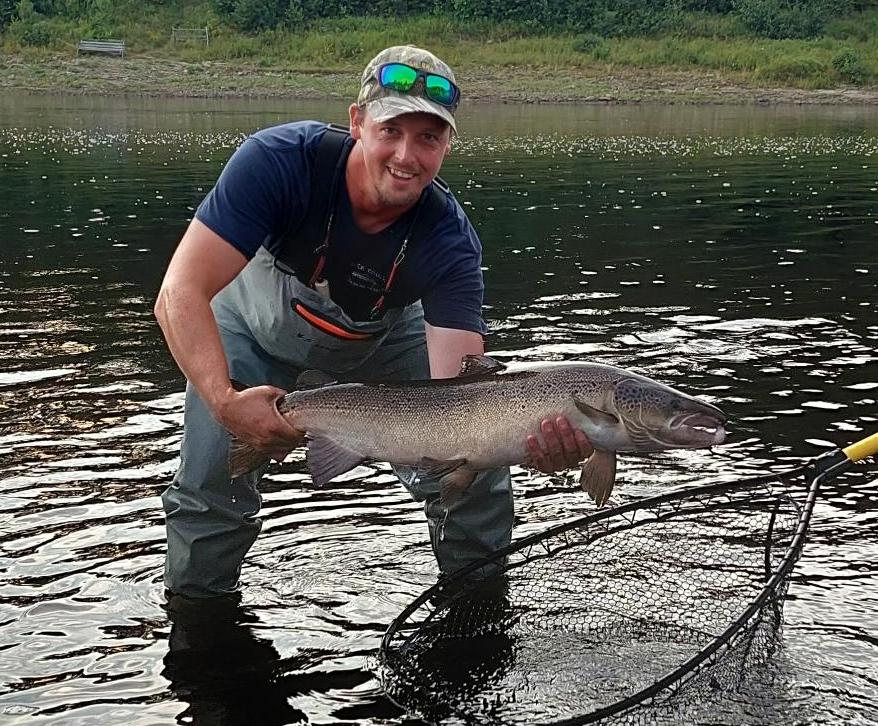
A fine salmon from Black Brook just as August turned to September. By its color it had been holding in that pool for a while.
Please don’t forget:
- Save the date of Feb. 4 to attend the MSA US Annual Event in Freeport, Maine
- If you have a goods or service that you’d like to donate to the MSA auction please drop me a line at bigbass@maine.rr.com.
- Consider planning some Miramichi fishing for 2023 sometime around late June or early July.
Thanks for reading. Brad Burns


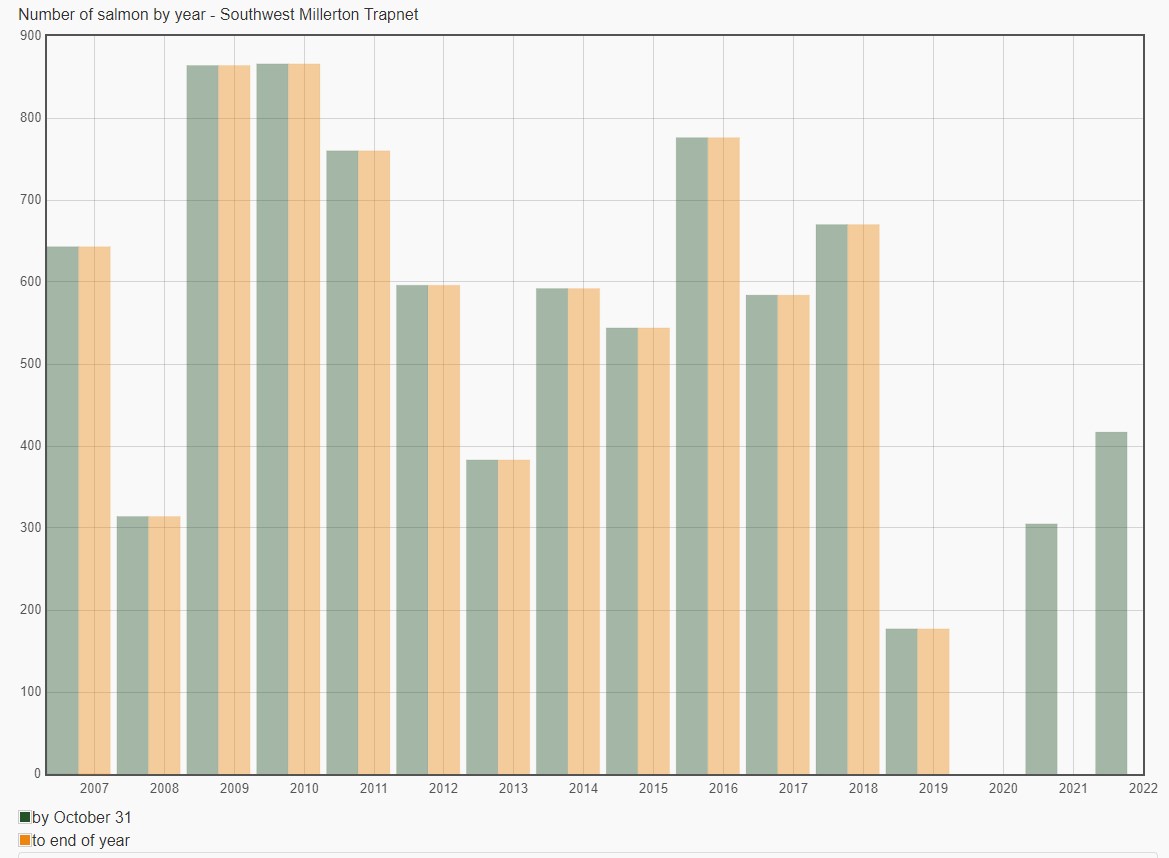
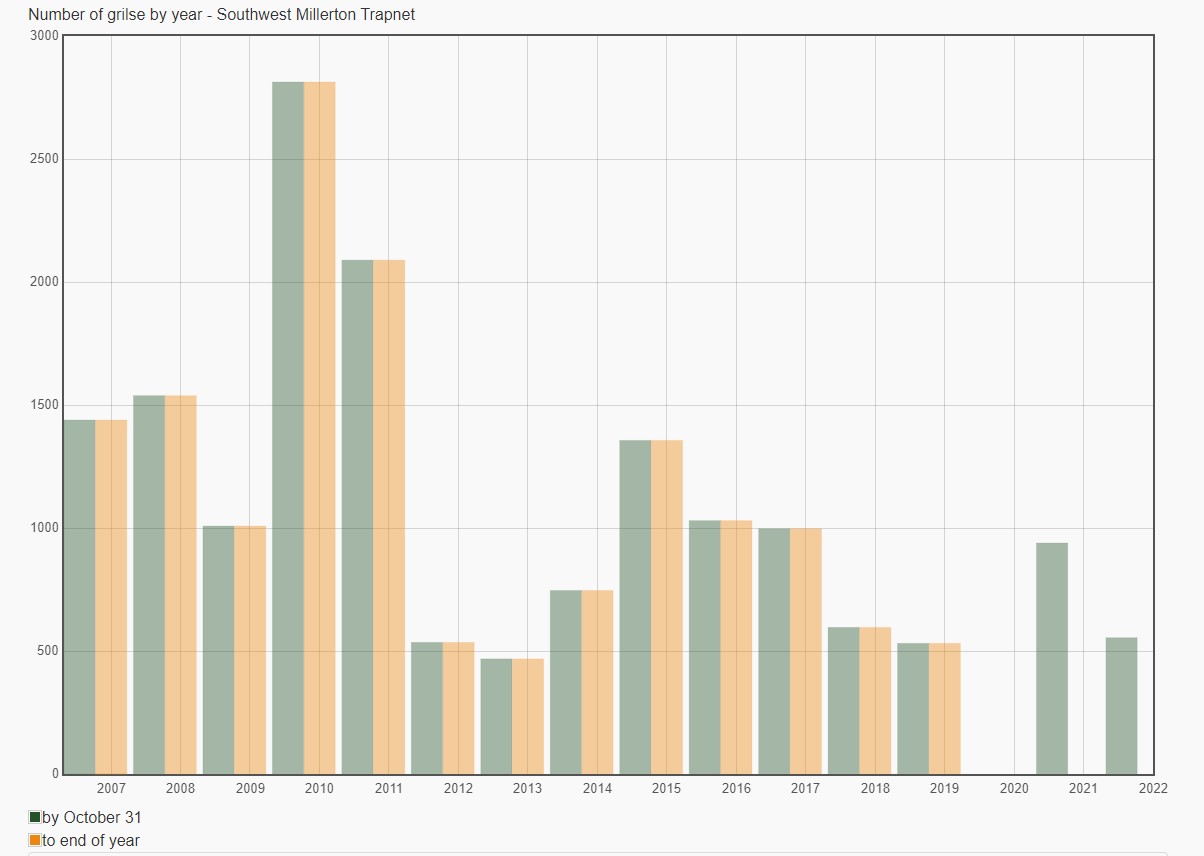
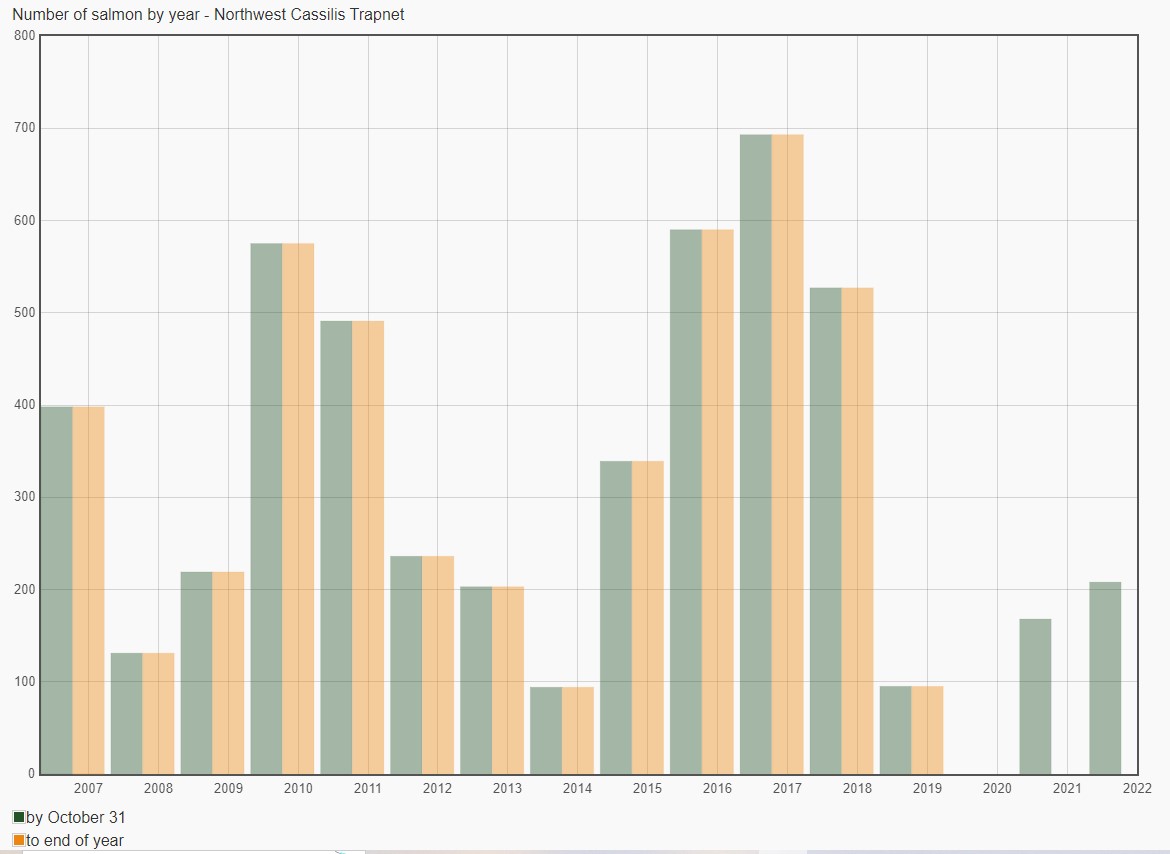
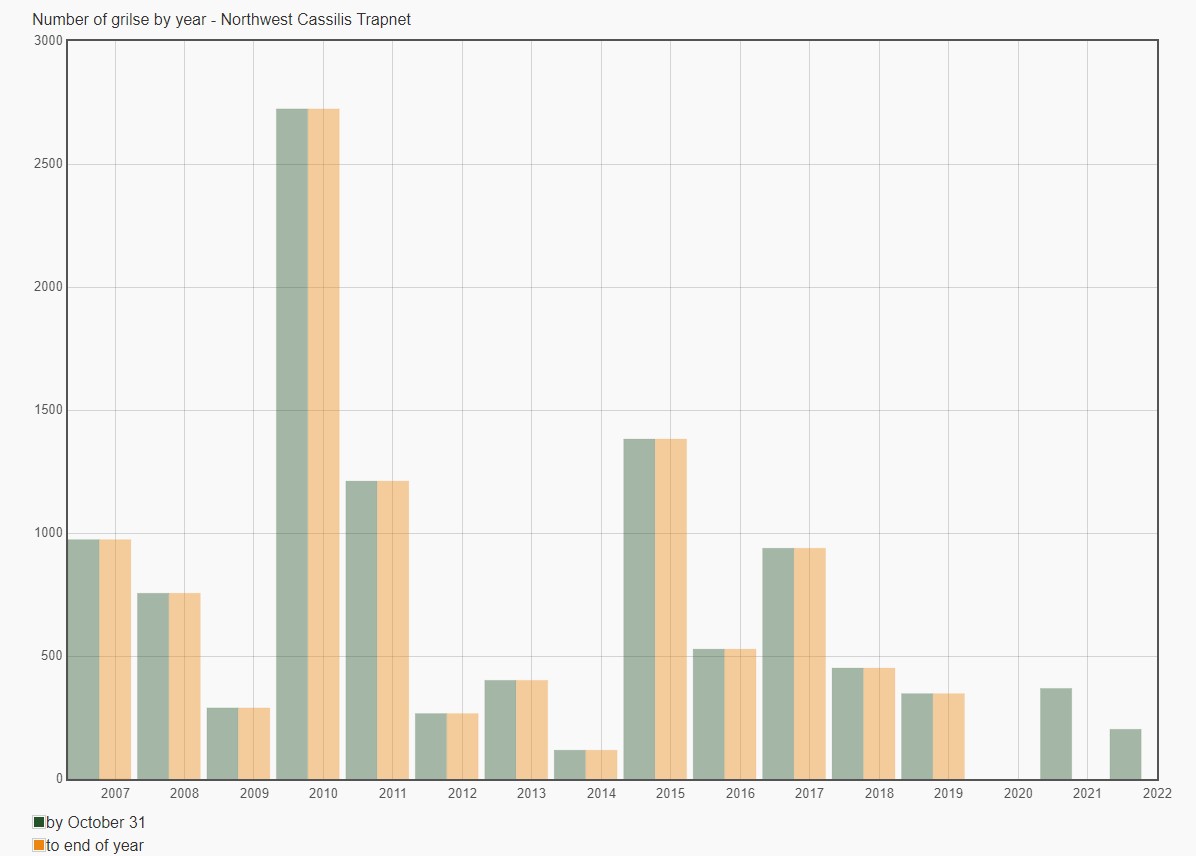
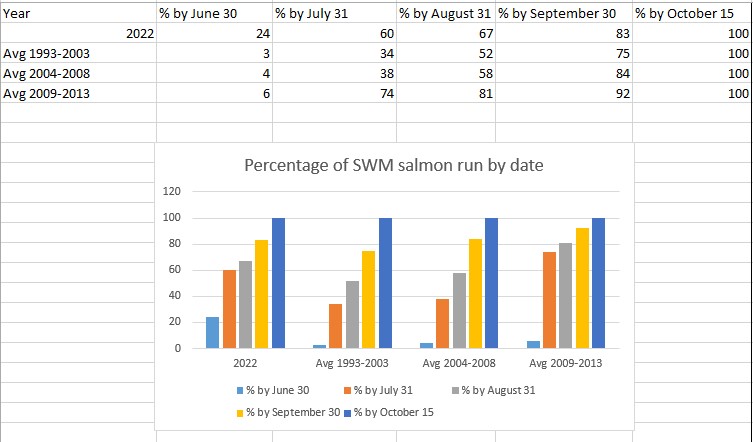

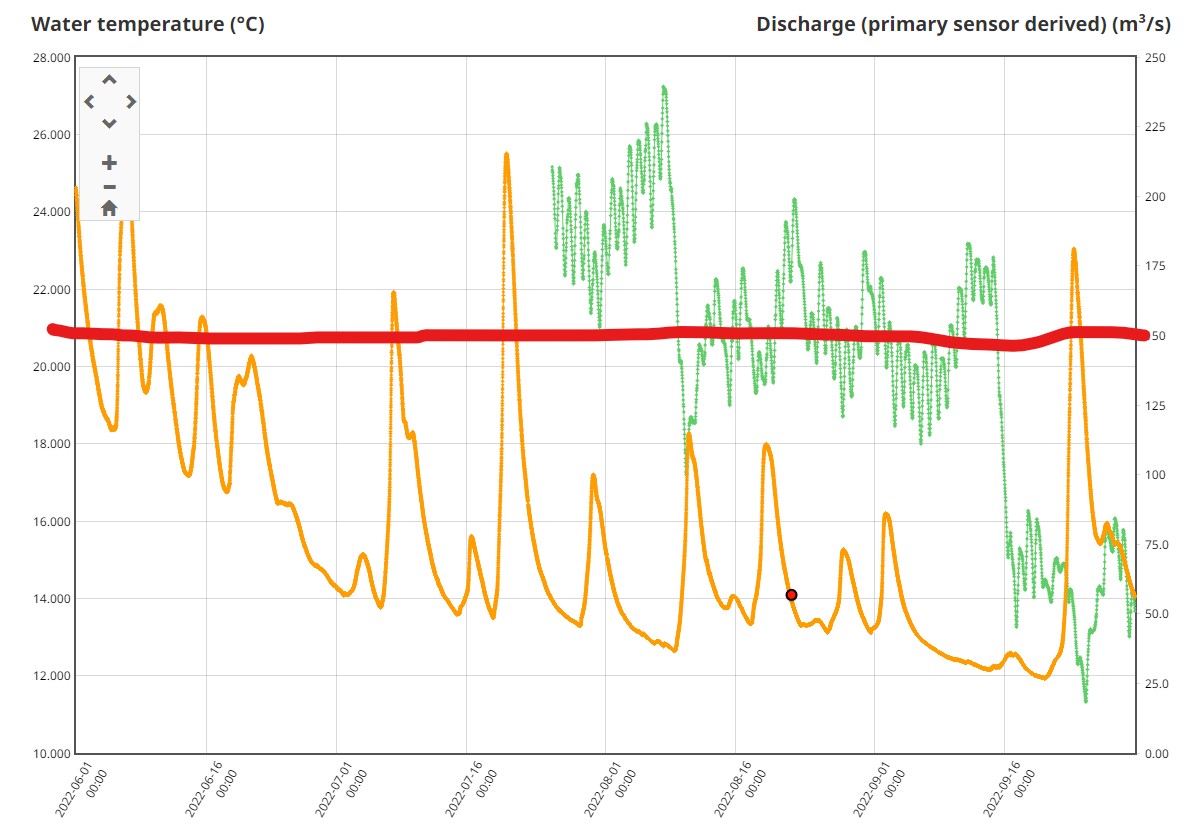
Very interesting Brad. Thank you.
Thanks Tom. One major typo is that the Feb 4th dinner is at the Portland Country Club in Falmouth, Maine not Freeport. Info on tickets will be later on this month.
Thank you very much for all the hard work and commitment you put into helping keep the salmon community informed, Brad. The metrics you provide are well received, and your posts are always very well written!
Thanks Greg. I also talked to retired professor and scientist Rick Cunjak PhD about the season’s numbers. He said that he was cautiously optimistic about this year’s numbers, and that we need to pray for rain. When salmon spawn in water levels that are to too low there is a danger that cold air can freeze the eggs. Brad
Hi Brad, I don’t know if you are aware that Evelock Gilks,a fixture at the Miramichi Salmon Club in Doaktown passed away recently… those of us who have fished there for many,many years are going to miss him…he was the MSC……thanks for the updates about the river…always hopeful for a better year soon…..take care Mac
Mac – I gathered that Evelock had passed from what I saw on Facebook. I never met the man, but always heard good things. This summer we talked by e-mail about promoting MSC on FishPal, and he said that he was very interested. I stopped by to meet him in September but he wasn’t there. An absolutely terrific facility by the way… Any idea who will be filling his shoes?
I have no idea, it’s going to take big feet to fill those shoes……missing him after 34 years fishing there…….
Hello Brad,
This is interesting data and a very good analysis of it. Thank you for taking the time.
Thanks Kris. I hope that you got in some of that Nova Scotia Northumberland fishing last month. I wish that was closer for me.
Sorry it took me so long to comment Brad.
Your story lines up very well with what we experienced this season at Rocky Brook. Thank you for taking the time to put the information to graphical format. The graphs and data you have provided make it much easier to explain, and speak to, 2022.
Wayne
Thanks Wayne. It is always a fun exercise to look at the season in review, and helpful when I look forward to next season – as I already am!
Brad,
You mentioned a possible spawning failure in 2015.
If I remember correctly 2015 was the year of the Dec flood with the MSW up 20’. The fear at that time was that the high water would flush out all the reeds. Appears that it did
May 2023 be a better year
Kit
Hi Kit – there was one peak back in early Dec of 4 meters, but according to Rick Cunjak it probably wouldn’t be anything that would wash out the redds. What they really worry about is when there is a rapid raise that breaks the ice free and sends it tumbling. Brad